

Tidal Exchange

On the Rise

Giving Coastal Salt Marsh a Fighting Chance
e Elkhorn Slough features California’s largest tidal salt marsh south of the San Francisco Bay, yet without restoration the slough’s remaining marshes are projected to vanish within 50 years.
e Elkhorn Slough Reserve’s Tidal Wetland Program is taking action to give our salt marshes a fighting chance.
At the Hester Marsh restoration site, Tidal Wetland Program Director Monique Fountain gestures across the slough to a healthy tract of salt marsh — thick with pickleweed and other salt-tolerant plants that bind soils, lter rainwater and runo , and provide shelter for birds and wildlife that rely on the estuary for survival. en, she calls attention to the sparse patches of pickleweed dotting the site the Tidal Wetland Program is working to restore.
“Because this area was diked, drained, and farmed during the past century, Hester Marsh has dropped too low in tidal elevation to sustain healthy vegetation. e existing plants are drowning under the tides, and new seedlings are unable to take hold,” she explains. “Our goal is to raise the elevation

of 61 acres of these drowned wetlands to restore functional, resilient coastal salt marsh that keeps pace with projected sea level rise.”
Earth moving equipment rolls in a conga line to the growing edge of the new marsh. e movements are e ciently choreographed: an excavator shovels enormous scoops of stockpiled soil (sourced from the Pajaro River Flood Control Project) into the bed of a tracked dump truck that has just pulled up. Once full, an empty truck drives in to take its place, and the full truck trundles its payload over what was mud at just minutes ago to the marsh edge, where a bulldozer awaits. e soil pours from the truck’s bed and the bulldozer begins to spread the mound forward onto the rising marsh plain, preparing for the next load of dirt, already on its approach.
(continued on page 10)
Cover: Hester Marsh restoration in progress, photo by John Haskins, ESNERR
By adding soil to elevate the drowning wetlands, the Hester Marsh Restoration provides conditions to allow salt marsh plants to grow.
Elkhorn Slough Foundation
Anne Olsen
President
Robert Hartmann
Vice President
C. Michael Pinto
Treasurer
Bruce Welden
Secretary
Judith Connor
Past President
Ed Boutonnet
Terry Eckhardt
Sandy Hale
Kent Marshall
Murry Schekman
Anne Secker
Laura Solorio
Tara Trautsch
Mark Silberstein
Executive Director
e mission of the Elkhorn Slough Foundation is to conserve and restore Elkhorn Slough and its watershed.
We see Elkhorn Slough and its watershed protected forever— a working landscape, where people, farming, industry, and nature thrive together. As one of California’s last great coastal wetlands, Elkhorn Slough will remain a wellspring of life and a source of inspiration for generations to come




Visitor Center Pond
PO Box 267, Moss Landing California 95039
tel: (831) 728-5939
fax: (831) 728-7031
www.elkhornslough.org
T
Scott Nichols, Editor
On your next visit to the Elkhorn Slough National Estuarine Research Reserve, you can enjoy an easy ¼-mile trail from the Visitor Center, with sweeping views of the waters and wetlands of the estuary. e new trail loops near the Reserve’s oak woodlands and through the coastal scrub and grasslands — a sampling of the habitats that enrich our watershed with a diversity of birds and wildlife — then winds beside coast live oaks to the Elkhorn Slough Overlook, and returns along the existing paved trail. e centerpiece of this gentle loop is a seasonal pond, measuring about 100 feet across with a capacity of 150,000 gallons. is winter, Reserve sta and volunteers planted California native plants around the pond, which in addition to providing habitat for amphibians also serves as a model for water conservation. Funded in part by grants from NOAA and through a Drought Response Implementation Plan (DRIP) grant from the California Department of Fish and Wildlife, the Visitor Center Pond captures 15,000 gallons of water for every inch of rainfall.
Importantly, the Visitor Center pond also expands the “living classroom” available to the Reserve’s education program — o ering a spot to collect and examine water
Elkhorn Highlands Reserve features expansive coast maritime chaparral (top) and 6 acres of seasonal wetlands (bottom, left); endangered species found here include Yadon’s rein orchid (bottom, center) and California tiger salamanders (bottom, right).
Elkhorn Highlands Reserve Decade of Partnership Protects 167 Acres
After a decade of collaboration and due diligence, the Elkhorn Slough Foundation has acquired the 167-acre Elkhorn Highlands Reserve property from Caltrans in a rst-of-its-kind mitigation transfer, o setting environmental impacts of the Prunedale Improvement Project, which provided welcome safety improvements along a dangerous stretch of Highway 101.
Elkhorn Highlands Reserve includes North Monterey County’s largest acreage of previously unprotected maritime chaparral and is home to several rare native plant species, including the federally endangered Yadon’s rein orchid and the federally threatened Monterey Spine ower. e property also features six acres of seasonal freshwater wetlands, providing critical breeding sites for the endangered California tiger salamander and other threatened amphibians.
“With permits to build a residential subdivision approved and development on the horizon, these rare plants and wildlife faced a looming threat,” says ESF Executive Director Mark Silberstein. “When Caltrans approached the Elkhorn Slough Foundation to identify lands that could mitigate the impacts of highway construction, we saw a possibility to permanently protect the Elkhorn Highlands Reserve.”

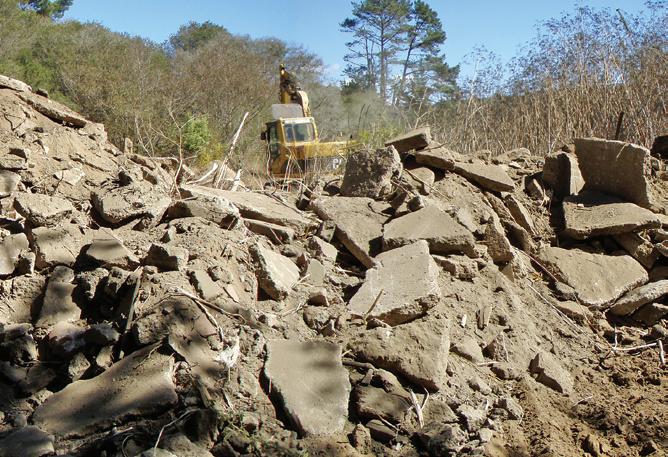
When Caltrans purchased the mitigation property in 2008, development on the property was halted and 20 acres of farm elds were fallowed. e Elkhorn Slough Foundation helped Caltrans clear more than 600 tons of refuse from the property, primarily concrete slabs and agricultural trash from historic use of the property, including an abandoned airstrip.
“For almost a decade, the Elkhorn Slough Foundation has cooperated with Caltrans to steward Elkhorn Highlands Reserve,” says ESF Land Acquisition Manager Kevin Contreras. “Yet there was simply no mechanism for Caltrans, a government agency, to convey funds to the Elkhorn Slough Foundation for ongoing land management.”
(continued on page 4)
samples, as well as places for small groups to gather and learn. Future plans include enhancements to the outdoor amphitheater and access to nearby coast live oak woodlands.
“ e Visitor Center pond allows students to compare life in freshwater ecosystems with life in the estuary,” says Elkhorn Slough Reserve Manager Dave Feliz. “ e pond is already developing into a diverse ecosystem with Paci c chorus frogs actively breeding in their new habitat. We’re excited to create a space to share the richness of these wetland habitats with our community.” •
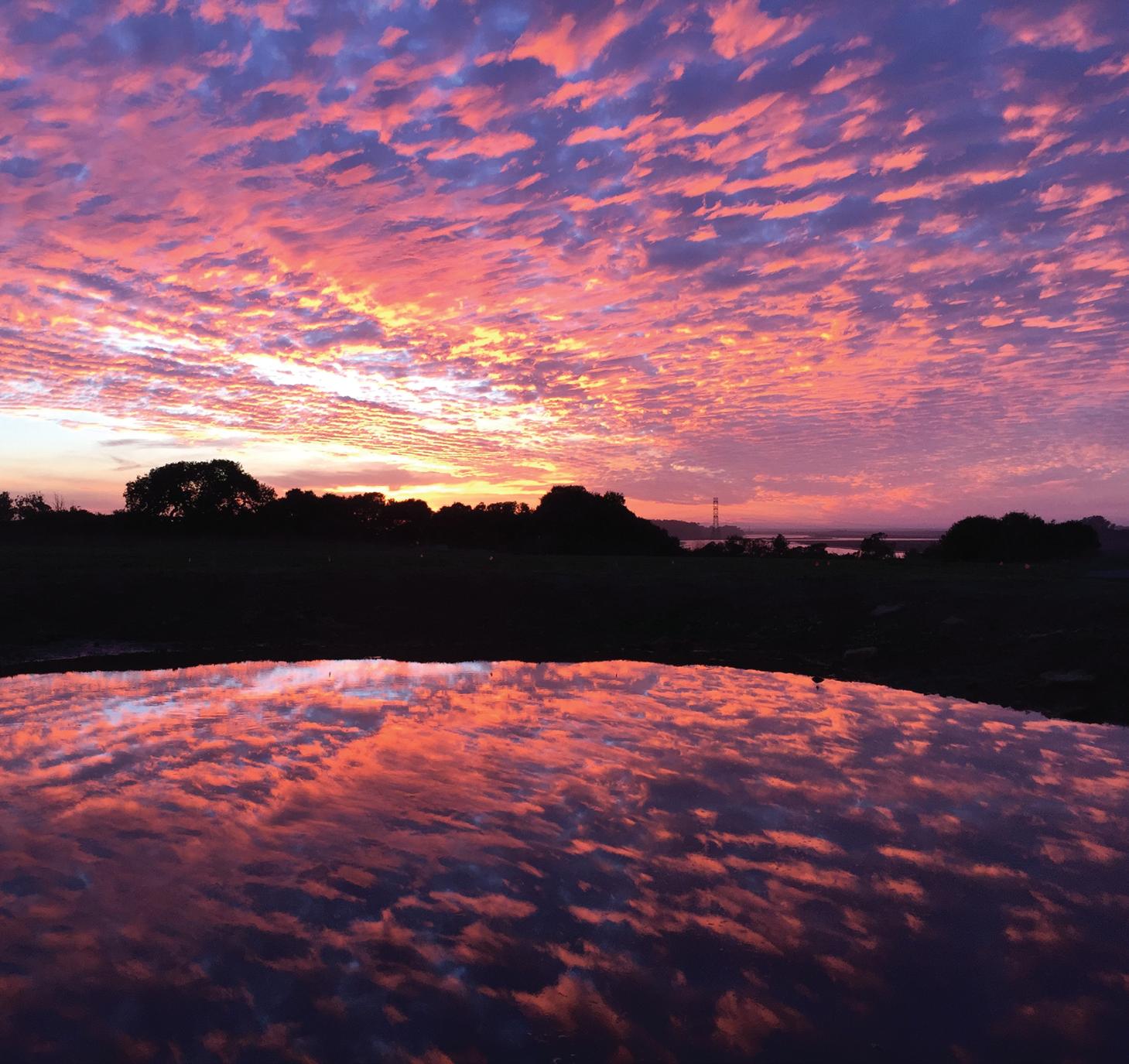
Sunset re ecting o the Visitor Center pond, photo by Katie Pofahl
Historic uses of the land included farming and a private airstrip; in recent years, ESF has helped Caltrans clear 600 tons of debris from the property.
photo by Dave Feliz
Elkhorn Highlands



(continued from page 3)



enabling the rst-of-its-kind transfer.
Fortunately, that changed in 2011 when State Assemblyman Luis Alejo — with the partnership at Elkhorn Highlands Reserve as his inspiration — co-sponsored Senate Bill SB436 (Kehoe), which authorized state or local agencies to transfer both land and long-term stewardship funds to a quali ed and approved nonpro t organization.
In late September 2017, Caltrans transferred title of Elkhorn Highlands Reserve, valued at $4.5 million, to the Elkhorn Slough Foundation, in addition to an endowment for the perpetual management and care of this property.
Elkhorn Highlands Reserve links key protected lands in our watershed, including Monterey County’s Manzanita Regional Park and the Elkhorn Slough Foundation’s 1,000-acre Northern Crescent. Together these expanses of intact habitat serve as stepping-stones to ensure the survival of native plants and wildlife by reducing fragmentation caused by subdivision and development.
In addition to protecting rare habitat for threatened plants and wildlife, the retirement of groundwater pumping on the property will conserve an estimated sixty acre-feet (about twenty million gallons) of water each year in a heavily over-drafted aquifer.
“On other lands owned by the Elkhorn Slough Foundation, ground-water pumping on more than 700 acres of former elds was ended, saving 680 million gallons of water each year,” says Mark. “By restoring these bare slopes with native plants we also increase capture of rainfall that recharges our groundwater basins.”
To protect sensitive plants and wildlife, public access on he property will be limited to special tours arranged by the Elkhorn Slough Foundation — register at elkhornslough.org for an upcoming guided walk at Elkhorn Highlands Reserve on April 29, led by Executive Director Mark Silberstein.
Elkhorn Highlands Reserve tour, photos by Nicoletta Lanese
(above) Agency representatives and elected o cials tour Elkhorn Highlands Reserve; (left) ESF’s Mark Silberstein thanks Supervisor Luis Alejo for
Sand Hill Farm
e ten-year restoration of the Elkhorn Slough Foundation’s 107-acre Sand Hill Farm property is now two years underway. anks to our generous members and volunteers, this year we have planted hundreds of coast live oaks and willows, placed natural erosion control materials to prevent gullies and direct storm runo , and healed past impacts to this keystone property which links a 3-mile corridor of ESF-protected lands to the wetlands of the Reserve.
Yet there is still much work to be done, from removing old caches of agricultural plastic to planting native grasses and saplings. Your ongoing support allows us to restore and protect Sand Hill Farm. ank you! •

Clockwise from top: Land Acquisition Manager Kevin Contreras discusses Sand Hill Farm at an ESF kayaking trip; in addition to former farm elds, the property features oak woodlands and chaparral; the property links the Elkhorn Slough Reserve with a 3-mile corridor of ESF-protected lands; workers anchor erosion control material made of coconut- ber that slows storm runo and prevents gullies while allowing plants to grow; skilled volunteers from the CCC plant native willow cuttings to stabilize the soil.



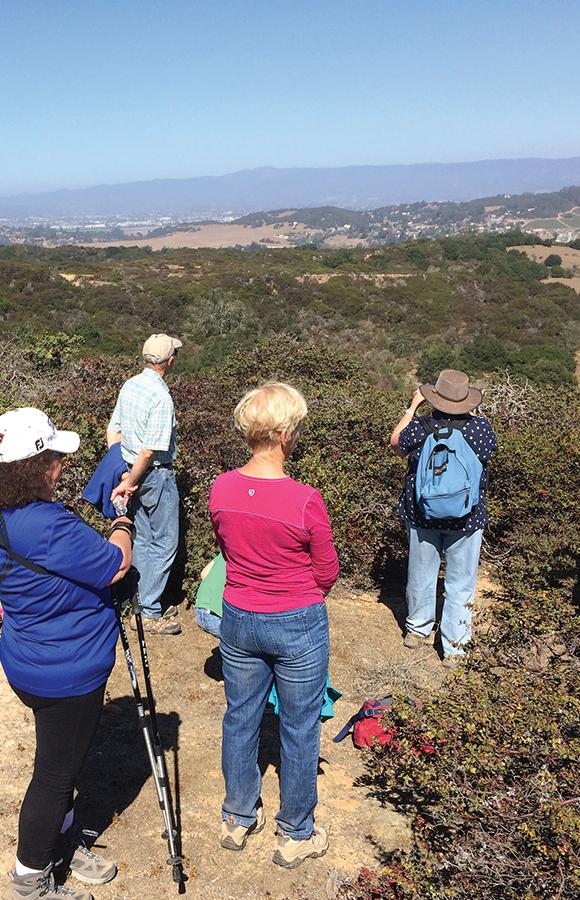
GRANTOR PROFILE
Sea Otter Foundation & Trust (SOFT)
e inspiration for the Sea Otter Foundation & Trust (SOFT) was sparked at at the Sea Otter Conservation Workshop in Seattle, when Dr. Mike Murray of the Monterey Bay Aquarium indicated the need for funding speci c to sea otter research and conservation. SOFT President and CEO Diane Tomecek saw an opportunity to use her nonpro t background to make a di erence in the lives of the otters she loves.




(Above) Watch sea otters in their natural habitat at elkhornslough.org/ottercam; (right) Ron Eby discusses the OtterCams with SOFT’s Diane Tomecek
“SOFT works to ensure the survival of sea otters in their native habitats,” says Diane. “We focus on funding projects that make new and lasting contributions to expand the eld of sea otter research and conservation.”
SOFT helps fund student research into sea otter physiology and disease, infrastructure to improve otter rehabilitation, and recently awarded funds to ESF to enhance the technology of the Elkhorn Slough OtterCams.
e original Elkhorn Slough OtterCam debuted during Sea Otter Awareness Week in 2013, guided by the energy and expertise of Elkhorn Slough citizen scientist Ron Eby.
Despite the challenges of streaming from remote marshes, the rewards are huge: a window into the lives of sea otters and their pups, without disturbance, in otherwise inaccessible areas.
“ e Elkhorn Slough OtterCams are a wonderful tool for observing Southern sea otter behavior in the wild,” says Diane.
“I watch often, yet it’s always amazing to see otters hauling out on the pickleweed, or mothers grooming their pups, from anywhere I am in the world.” anks to support from our members and grantors, like SOFT, the Elkhorn Slough OtterCams are expanding sea otter awareness locally and globally, sharing new research, seldom seen behaviors, and the importance of conserving and restoring our coastal watershed from ridgeline to tideline. •
Photo courtesy of SOFT
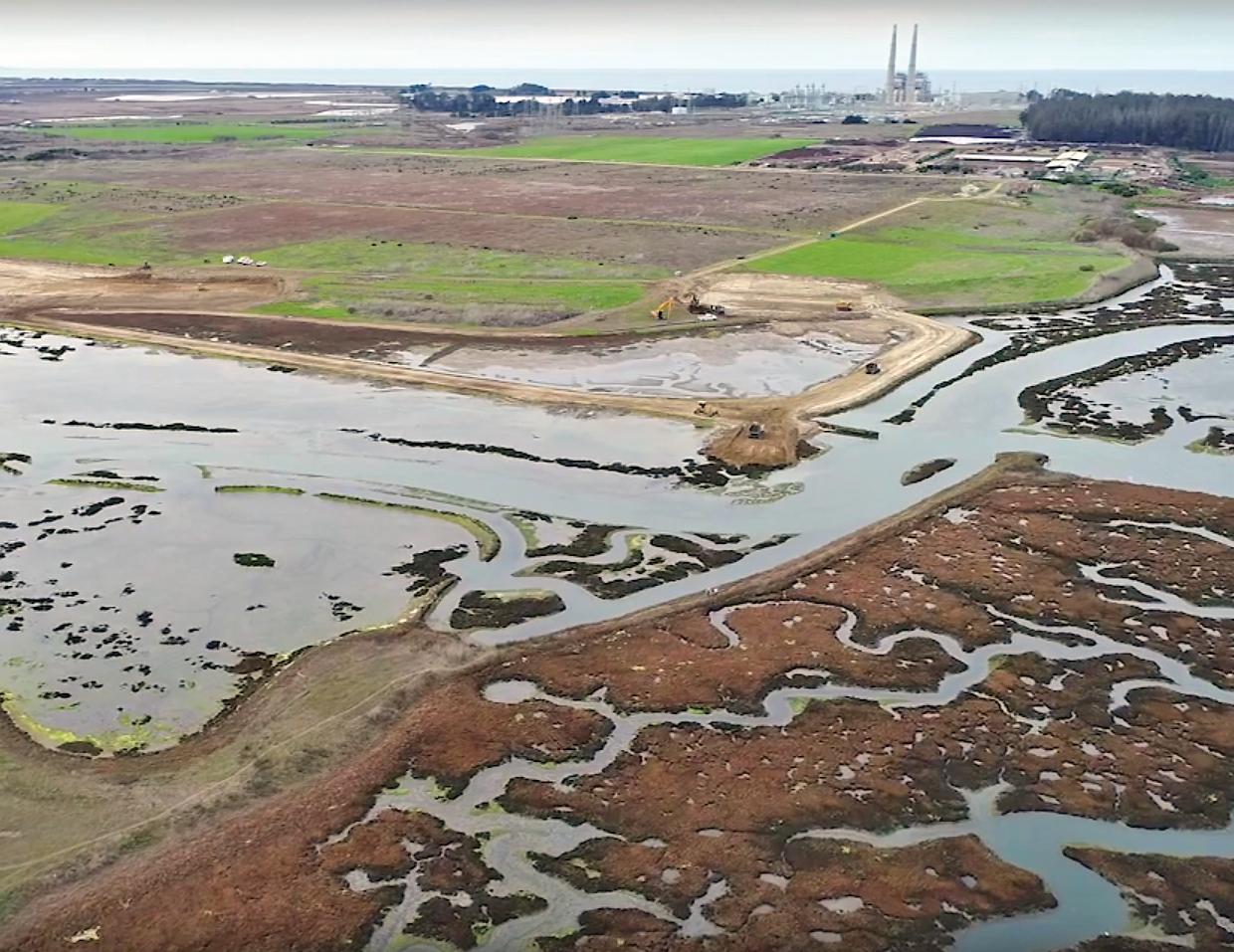

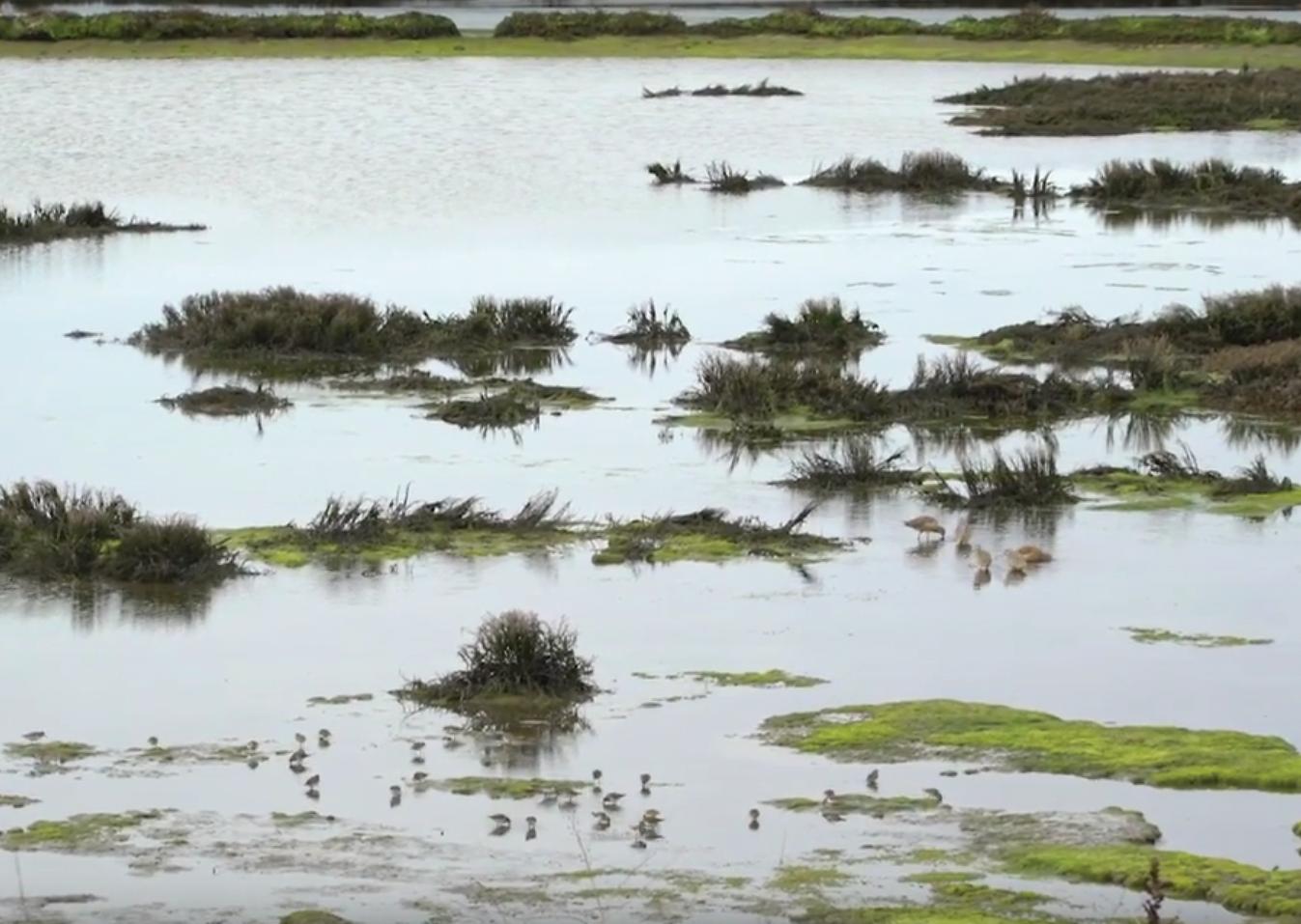
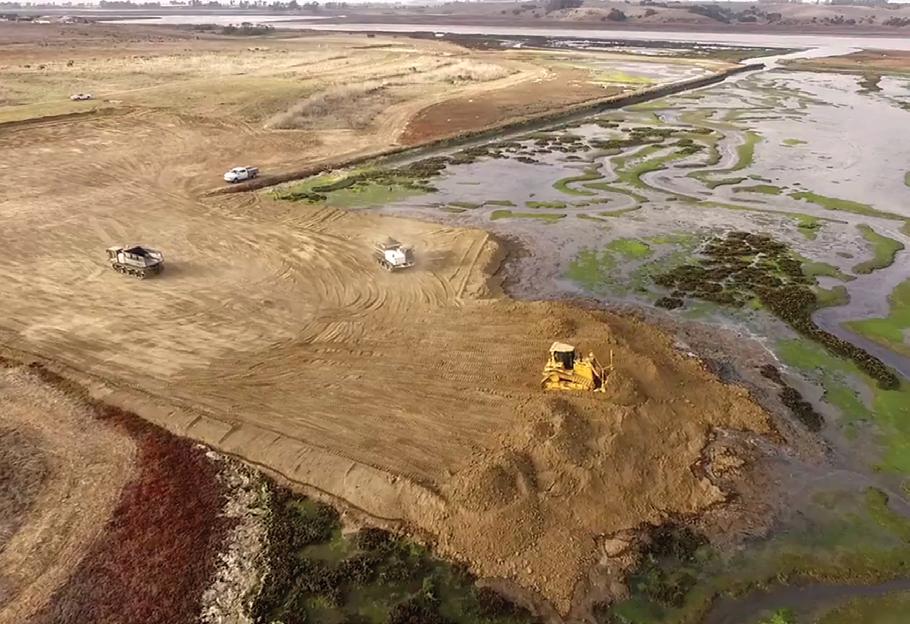

Hester Marsh
(Continued from cover)
e procession continues from morning to afternoon — moving up to 2,000 cubic yards of sediment daily. All the tractors and the excavator are equipped with GPS sensors to measure the precise location, elevation, and grade of the added sediment to match our blueprint for restoring Hester Marsh.

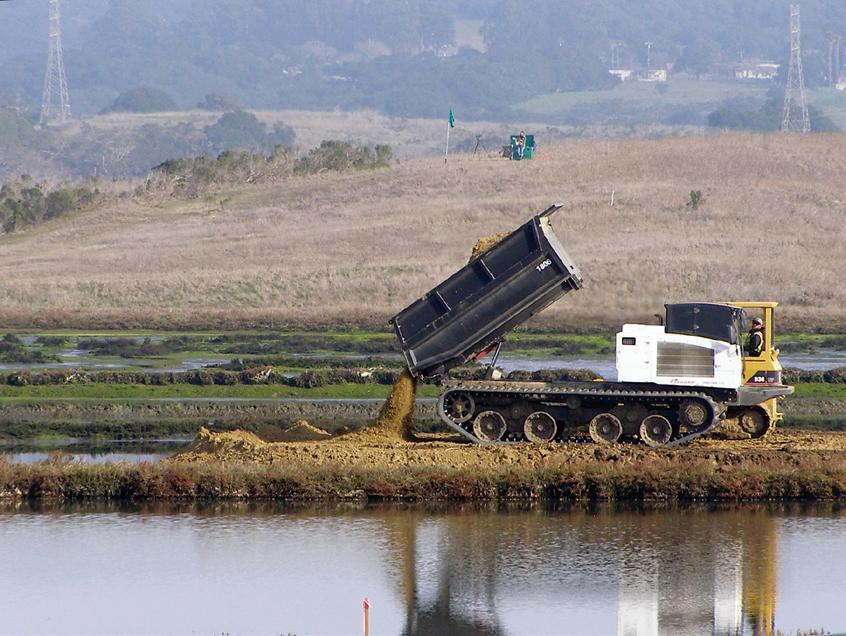
When complete, the Hester Marsh Restoration Project will nearly double the available salt marsh habitat in an area used by sea otters and their pups.
Standing sentinel on a nearby hillside, a trained observer monitors Southern sea otters, harbor seals, and other sensitive wildlife in the area, to ensure the safety of the marine mammals and record any disturbances caused by the equipment. Similarly, Elkhorn Slough Reserve researchers con rm the project does not harm the water quality of the adjacent estuary using arrays of sensors calibrated to measure factors such as dissolved oxygen, pH, salinity, and turbidity. e $3 million construction phase of the restoration project is slated to last another six months. After that, Reserve researchers will focus on monitoring natural re-vegetation of the marsh, and will continue to measure the role marshes play in greenhouse gas reduction by absorbing carbon dioxide. Recent research documents high rates of carbon being stored in the marshes of the Elkhorn Slough for thousands of years. Salt marshes are particularly e ective because the carbon they capture, referred to as “blue carbon” for its coastal source, is buried inde nitely — incorporated into soils as marshes build upward, tracking sea level
Evenings at the Estuary
Elkhorn Slough Reserve and Elkhorn Slough Foundation welcome you to the 2018 season of Evenings at the Estuary, a series of lectures about conservation issues that impact our community. Events are free and open to the public, held at the Reserve after regular operating hours. Seating is o ered on a rst-come, rst-served basis, subject to capacity. We invite you to join us at the Visitor Center at 5:30 pm before each event for conversation or a brief walk to the overlook. Visit elkhornslough.org for updates and more information.










(From top) Hester Marsh was diked, drained, and farmed in the past century, and the wetlands behind its now-breached levees have subsided; tidal salt marsh plants drown when too low in elevation; by adding soil to raise the elevation of Hester Marsh, the Tidal Wetland Program is restoring sustainable conditions for marsh plants to grow; in ve years, we should see a healthy, resilient coastal salt marsh that keeps pace with sea level rise.
rise (for more about Reserve research on blue carbon see the the Summer 2015 issue of Tidal Exchange.)
“After we move the soil, we will restore the staging area as native-dominated grasslands and plant native vegetation in the ecotone, the zone between the grasslands and the high marsh,” Monique adds. “Marsh plants will begin colonizing in the rst year, so in ve years, we should see a healthy system above and below the tidelines.”
Restoring Hester Marsh will provide vital information as we look at the possibility of restoring other low-lying marsh areas in the slough. A project this size is not done alone. While led by Elkhorn Slough National Estuarine Research Reserve’s Tidal Wetland Program, the restoration project is guided by input from more than 100 scienti c advisors, environmental regulators, and community members. Key funding comes from the California Department of Fish and Wildlife’s Wetlands Restoration for Greenhouse Gas Reduction Program, the State Coastal Conservancy, California Department of Water Resources, the Wildlife Conservation Board, and the US Fish and Wildlife Service’s National Coastal Wetlands Conservation Program.
We look forward to keeping you posted on the progress of this large-scale restoration e ort. For project updates and video, visit elkhornslough.org. •

Raptors: Nature’s Nontoxic Pest Control
Master falconer Antonio Balestreri will bring a Great Horned Owl and a Peregrine Falcon to share how native raptors provide a natural alternative to toxic forms of pest control.

SLOUGH VIEW
The Great Experiment

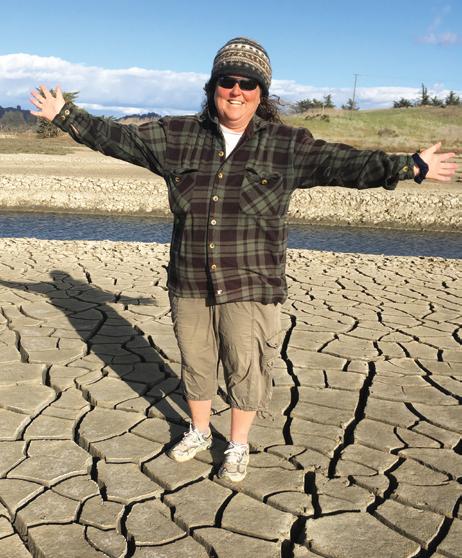
Mud on the Move: Restoring Hester Marsh
Tidal Wetland Program Director Monique Fountain tells how scientists, land stewards, regulators and community members teamed up to restore Elkhorn Slough Reserve’s Hester Marsh.
Suddenly, I nd myself in the midst of the largest experiment of my scienti c career. I’ve been conducting experiments for 25 years, but the scale of the Hester Marsh restoration dwarfs them all.
Salt marsh restoration is still in its infancy. So all marsh restoration projects are in a sense experimental. Over the next years, we’ll be closely monitoring the results. Did we choose the right starting elevation, so that the nal result is a marsh that is high enough to be safe from many decades of sea level rise, and low enough to avoid invasions by upland weeds? Did we allow enough creeks for su cient drainage? We will learn from the outcomes, to improve restoration here and elsewhere in the future.
Beyond this, Hester Marsh provides an amazing blank slate for huge replicated experiments comparing di erent restoration approaches, allowing us to share with others what works best. We will be planting 20,000 high marsh plants, and doing so in the form of multiple restoration experiments. We’ll be comparing planted to unplanted areas, densely clustered versus widely spaced plants, and the success of seven di erent plant species at di erent elevations.
We will get some answers very quickly — learning how the bare sediment is colonized naturally by recruitment from seeds borne on the tides, watching early survival and growth of the plants we put in. Other answers will come gradually, such as tracking the succession of plant communities to determine which species we plant hold their own over the years and which are supplanted by di erent species over time.
I’ll be out at Hester Marsh with my colleagues constantly in the coming years. I look forward to growing old here, and smile at the thought of myself as a feisty granny repeating transect surveys decades from now. Hester Marsh will not only be the biggest experiment I’ve ever been a part of, but also the longest. I can’t wait to see what happens. •
Kerstin Wasson, ESNERR Research Coordinator
Photo by Mark Holsapple
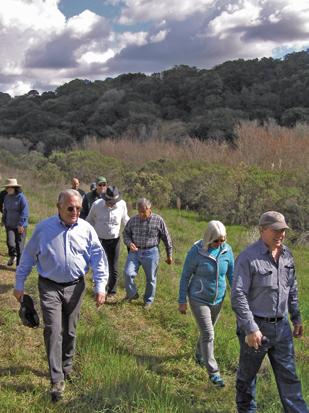

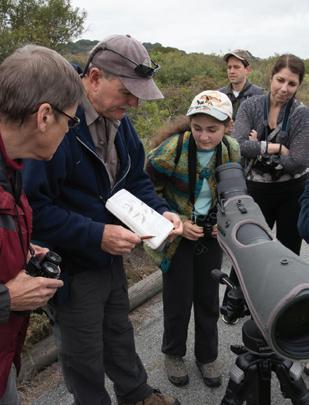
Elkhorn Slough Foundation
P.O. Box 267 Moss Landing, CA 95039
The Elkhorn Slough Reserve is open to the public Wednesday through Sunday, 9 am to 5 pm.
Visit elkhornslough.org for event details and registration. Hope to see you at the Slough!
Every Saturday & Sunday: Reserve Tours
Join knowledgeable docents for tours of the Reserve at 10 am & 1 pm.
First Saturday of every month, 8:30am: “Early Bird” Walks
With local birding expert Rick Fournier. Meet at the Reserve at 8:30 am.
Second Sunday of every month, 2:00pm: “Slough & Easy” Walks
Call the Elkhorn Slough Reserve at 831.728.2822 for more information.
March 31: Field Sketching with Artist in Residence Megan Gnekow
Enjoy a morning of art with Spring 2018 Artist in Residence Megan Gnekow at ESF’s Porter Ranch.
April 7: Annual Snowy Plover Mud Stomp
Join us on the mud ats with Point Blue biologist Carleton Eyster to create nesting habitat for endangered snowy plovers.
April 14-15: GLOBE Workshop | Earth Science for High School & Middle School Teachers
A 2-day eld and classroom workshop focussed on developing lessons on hydrology, meteorology, and soil data collection
April 29: Exploring ESF’s Elkhorn Highlands Reserve
Join ESF’s Mark Silberstein for a special guided walk at Elkhorn Highlands — an inspiring tale of conservation. (see story, page 2)
May 5: Spring Kayaking | On the Water with ESF
Enjoy a morning paddle led by expert guide and citizen scientist Ron Eby to enjoy the wild wonders of Elkhorn Slough.
May 10: Evenings at the Estuary | Raptors: Nature’s Pest Control
Local falconer Antonio Balestreri will bring a Great Horned Owl and a Peregrine Falcon to share how birds of prey control pests.
May 19: Birding by Sight, Flight and Song
Expert local birding guide Rick Fournier will help us identify Elkhorn Slough’s spring birds by appearance, calls, and behavior.


Photo by
